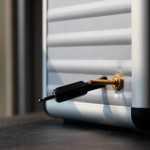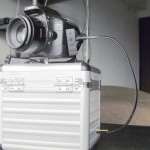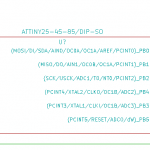cheap avr intervalometer
this project is obsolete if you own a Canon supported by http://wiki.magiclantern.fm
open source tool that runs from the SD/CF card at camera startup.
now that i have a digital camera (but my heart will always belong to film-based photography) i can do time lapse photography. sadly the firmware of my camera isn’t supporting this feature, so i had to build an intervalometer. i didn’t want to use an arduino (overkill & pricy), so i went with an attiny45, a generic optocoupler, a voltage regulator and a potentiometer for adjusting the timer from 1 second to 1 minute.
i just found out that it’s possible to power the avr from the camera (focus ring). have a look at this complete and small solution: http://www.doc-diy.net/photo/hdr-jack/
//Intervalometer from 1 second to 1 minute //Author: Patrick Sebastien Coulombe //Website: www.workinprogress.ca //Date: 2010-07-24 #define F_CPU 8000000 #include <avr/io.h> #include <util/delay.h> // use PB2 for led, pin 7 #define LED_BIT 2 // select ADC2, PB4, pin 3 #define CHANNEL 2 // shutter on (in ms) #define HOLD 300 // Return the 10bit value of the selected adc channel. uint16_t get_adc(uint8_t channel) { // ADC setup ADCSRA = (1 << ADEN) | (1 << ADPS1) | (1 << ADPS0); // select channel ADMUX = channel; // warm up the ADC, discard the first conversion ADCSRA |= (1 << ADSC); while (ADCSRA & (1 << ADSC)); ADCSRA |= (1 << ADSC); // start single conversion while (ADCSRA & (1 << ADSC)); // wait until conversion is done return ADCW; } // Scale long map(long x, long in_min, long in_max, long out_min, long out_max) { return (x - in_min) * (out_max - out_min) / (in_max - in_min) + out_min; } // Main program int main(void) { // vars uint16_t adcvalue = 0; uint16_t i; // define LED as outputs DDRB |= (1 << LED_BIT); while (1) { //release the shutter PORTB |= (1 << LED_BIT); //exposure length for (i=0; i<HOLD; i++) { _delay_ms(1); } PORTB &= ~(1 << LED_BIT); //interval time (using a potentiometer to adjust) adcvalue = map(get_adc(CHANNEL), 0, 1023, 1, 60); adcvalue = adcvalue * 1000; //one way to achieve long delay for (i=0; i<adcvalue; i++) { _delay_ms(1); } } return 0; } |
Time lapse test (3 hours) from my balcony.
I used Blender for making the tilt / shift effect. Here’s the source of the Blender file.



a phone cable might not be the best option here, but it’s so cheap (100 yen shop).
yes, i use hot glue everywhere and lots of it!
but if i had to redo the circuit, i would use this one: http://www.doc-diy.net/photo/hdr-jack/
Hey, the intervalometer is excellent. I regret saying it was funny-looking now….